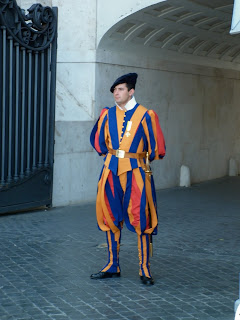
Every year on June 24th, Florence celebrates the feast of its patron saint, John the Baptist. On this day several festivities take place including parades, Rowing club competition along the Arno river and fireworks. Though the most anticipated event of the day is Calcio Florentino, a mix between football and rugby. Though there is a good bit of bare-knuckle boxing and wrestling in the sport as well. As a result Calcio Storico is not a game for those who don’t like the sight of blood. This game can be traced as far back as the 16th century Italy and every year this game is played in the middle of Piazza Santa Croce. Early in the day workers begin to setup the arena spreading sand across the Piazza and building stands for the spectators to watch.
History tells us that during the 1500s there were four teams that participated. The Bianchi, Verdi, Rossi, and Azzurri all partake in this historical event and each of these teams represents the different districts of Florence- Santo Spirito, San Giovanni, Santa Maria Novella and Santa Croce.
Novella and Santa Croce.
Over the centuries not a lot has changed in the way Calcio Storico is played. Players still dress in traditional costume and parade around the city, eventually finding there way to the Piazza. Before each game a procession occurs in which many of the citizens dressed in popular costumes of the medieval time period perform a ceremonial act. Durring this time they play several different songs of the city of Florence and eventually introduce the two teams.
The game is played between two teams made up of 27 players. The field is essentially a giant sand pit with a goal on both ends. There is one main referee, six linesmen, and a field master who only intervenes when things become too violent, such as a kick to the head. The game is played for 50 minutes with the winner of the game being the one who has scored the most points. There are not breaks during the game. Even serious injury does not stop the game. If a player is hurt, a medical team will come onto the field and put him on a stretcher and carry him off the field while the game is still being played. At the end of the game the winners receive a pile of steaks that are equivalent to that of a white calf.
I felt that it was interesting that they divided the teams into the separate areas of the cities, distinguishing the different territory within the city. When I asked one of the locals what determines the different territories he said that the Arno River that runs through Florence is a major divider between the two teams that played that day. It was also interesting seeing the passion between the two sides because when we got there it was obvious where each of the teams’ supporters were supposed to sit.
Many of the fans were very passionate about the game. Some brought blue and white flares into the arena that represented the different teams. Additionally, I found it interesting that such a violent game would be played as a celebration of the city’s patron saint.

 V
V





 Italy and city of Florence and the specific neighborhoods playing in the match. The blue team ended up dominating the white team and I even saw one of the blue team members crying to one of his buddies. I was in awe that a man of his size was getting emotional over something like this, but it just made me realize how much nationalism and pride went into this one game. People from Florence and even people from all over Italy take pride in this event and have for centuries.
Italy and city of Florence and the specific neighborhoods playing in the match. The blue team ended up dominating the white team and I even saw one of the blue team members crying to one of his buddies. I was in awe that a man of his size was getting emotional over something like this, but it just made me realize how much nationalism and pride went into this one game. People from Florence and even people from all over Italy take pride in this event and have for centuries.
















 which is in a league of its own) was Bruschetta al Pomodoro (grilled bread soaked in oil and garlic topped with tomatoes and basil). The tomatoes were bright red, and the entire combination of bread, olive oil, and tomatoes tasted fresher than I could have imagined. No wonder tourists craved Italian cuisine and the media has inflated these historical traditions- it was amazing! I savored every piece of tomato in hopes to make the appetizer last long enough until my dinner came.
which is in a league of its own) was Bruschetta al Pomodoro (grilled bread soaked in oil and garlic topped with tomatoes and basil). The tomatoes were bright red, and the entire combination of bread, olive oil, and tomatoes tasted fresher than I could have imagined. No wonder tourists craved Italian cuisine and the media has inflated these historical traditions- it was amazing! I savored every piece of tomato in hopes to make the appetizer last long enough until my dinner came.













